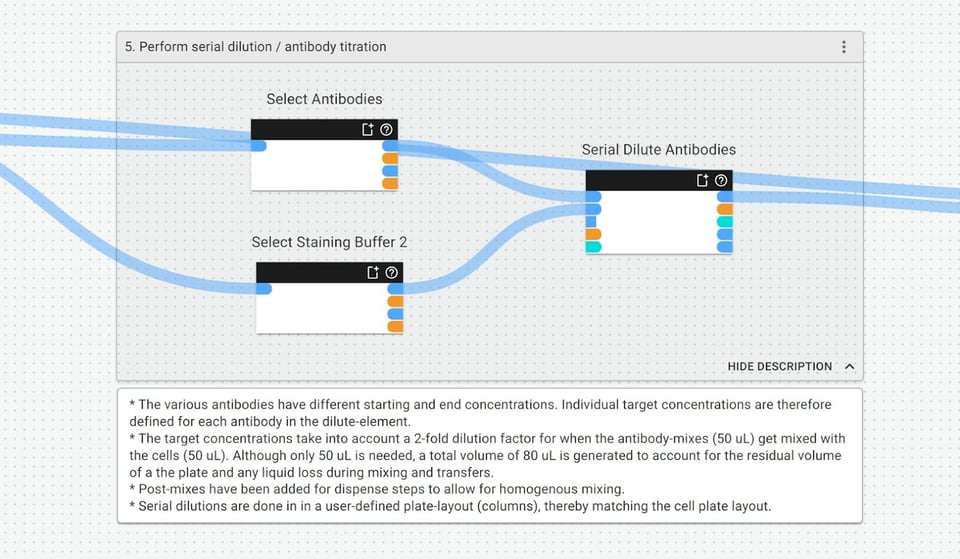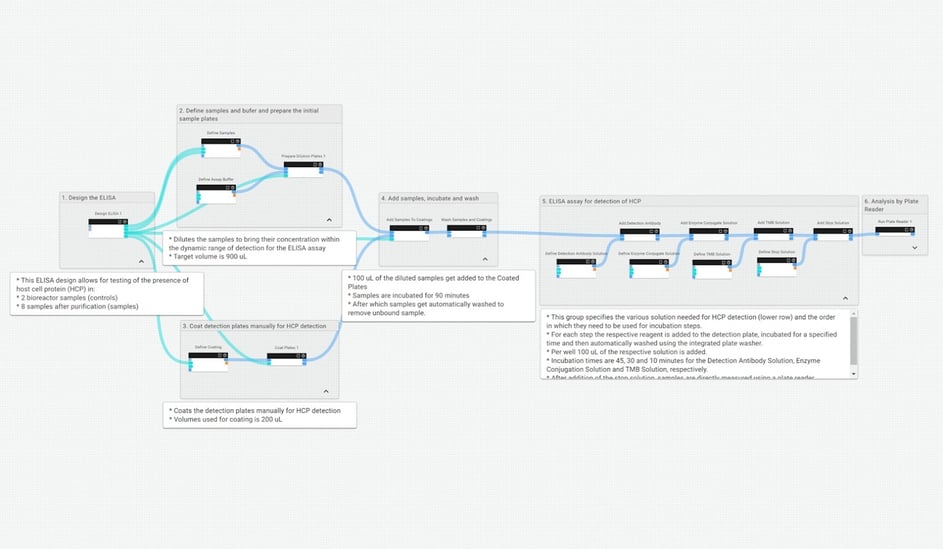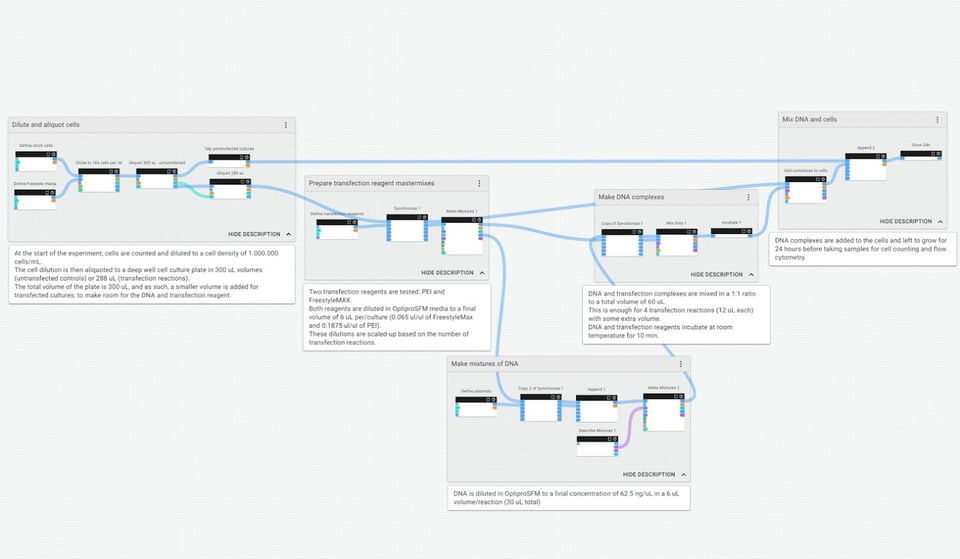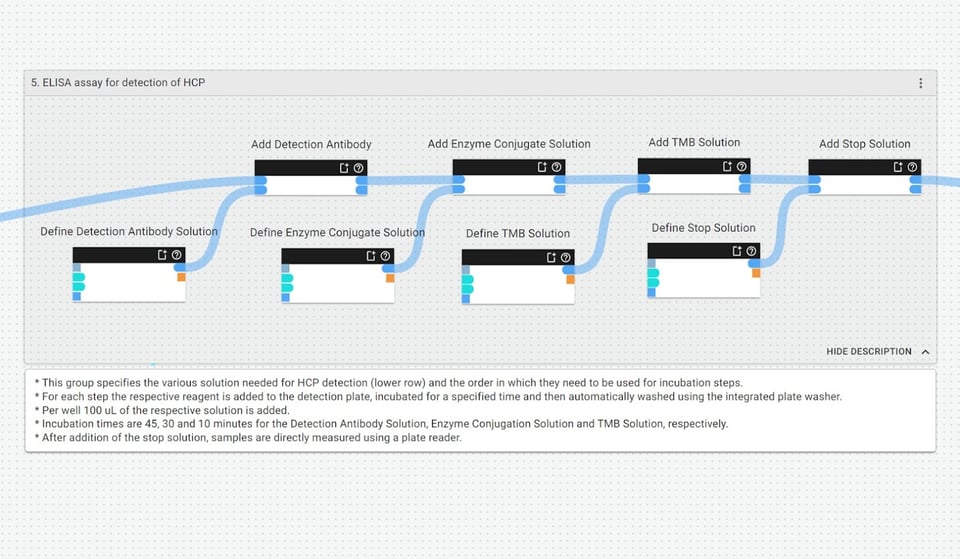It’s difficult to understand the experimental intent behind scientific protocols and executions, especially when they’re complex and contain a lot of steps.
This is because most protocols don’t necessarily convey the reason behind each step, which is important for proper documentation and protocol transfer between scientists.
So when a protocol and its experimental intent are not captured, it’s hard to come back to a previous one and pick up where you left off. This is true when you’re the author, but even more for anyone else.
How do we attempt to capture those details right now? Well, protocols are often described in step-by-step instructions (either in SOPs, word documents, or ELNs), where the distinction between types of information – such as instructions vs. intent – is not necessarily clear, or, in the worst case, added.
That’s why you will always scribble a little bit of extra information on your printed protocol.
It’s safe to say that it’s essentially a guarantee that vital context to your experiment is lost somewhere in that process thanks to scattered data sources…
…until now! We recently introduced Grouping and Annotations to the Synthace platform so you can capture contextual information and data as part of your experimental design.
So without further ado, let’s take a look.
Capture intent and explain thought processes
Synthace already provides a visual canvas for scientists to create experiments from scratch. But with the ability to group elements of that experiment, label them, and explain their significance and details, the whole process takes on a different level of accessibility.

When the intent and justification for the design are attached to the visual representation of the experiment, everyone will just get it.
What this means:
- Workflows are easier to interpret and better documented
- Anyone can see exactly why something was designed and executed in a certain way
Adapt and improve experimental design
If we understand the individual steps and nitty-gritty details of every protocol within a campaign, we can more easily adapt and modify them to fit a different intended outcome.

What this means:
- Workflows can be more easily adapted for iterative experimentation
- More confidence in the safe adaptation of existing steps without breaking your experiment altogether
Use prior knowledge and success in every new experiment
If you’ve ever had a workflow or protocol that proved to be a huge success in your experiment, you’ll likely know how difficult it is to repeat that experiment or adapt (parts of) it to another workflow, protocol, or experiment.

Grouping and annotating parts of your workflow means you can instantly understand and therefore reproduce your protocols across different experiments in the future, adapting them quickly to see the effect it has on your results.
What this means:
- Workflows are more transferable across new experiments
- It is easier to understand where previous steps can be reused in new campaigns
Better documentation = better communication = faster protocol development
Documenting a protocol and its experimental intent properly needs a lot of effort and attention to detail. Poor documentation makes it difficult to transfer protocols between scientists and have others reproduce similar results.

When we effectively communicate and document our intent from as early as the design stage, it’s clear to anyone involved, wherever they are, what’s being done and why.
What this means:
- Protocols have all vital experimental information in the context of the design
- Other scientists can understand, re-use, or adapt full protocols or parts of it more readily.
Could this help you in your lab?
We’ve already rolled this feature out to our current customers. If you think you might want to join them, or maybe just take a closer look at what the platform can do, book a call with one of our experts—they’ll be happy to help answer your questions.
This post is part of a bigger series about our latest features. Keep your eyes peeled for more coming soon.
Nuno Leitão, PhD
Dr. Nuno Leitão is a Principal Research Scientist at Synthace, where he leverages his 10 years of research experience in molecular biology, genetics, biochemistry, and DOE, to help drive product development. In his 5 years at the company, he has led and consulted on many internal projects and customer initiatives.
Other posts you might be interested in
View All PostsMeet Thomas Pesnot, Drug Discovery Services Director at Concept Life Sciences

Meet Örn Almarsson, CEO and Co-Founder at Axelyf

How AI is (so close to) transforming drug discovery

